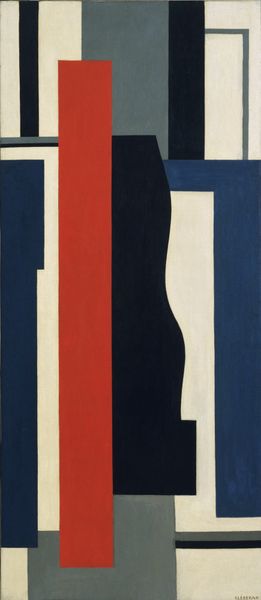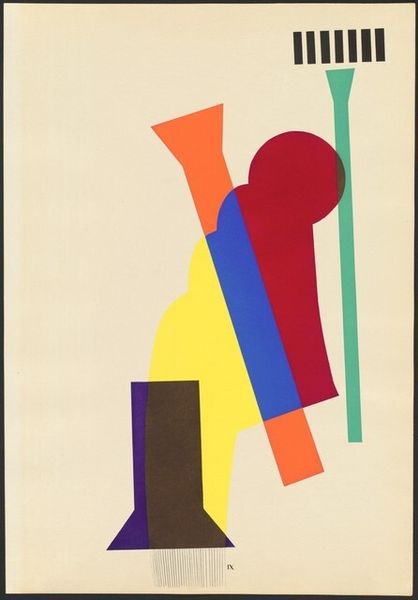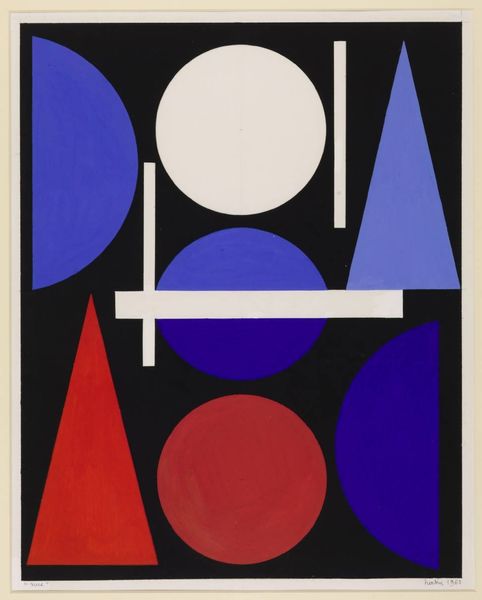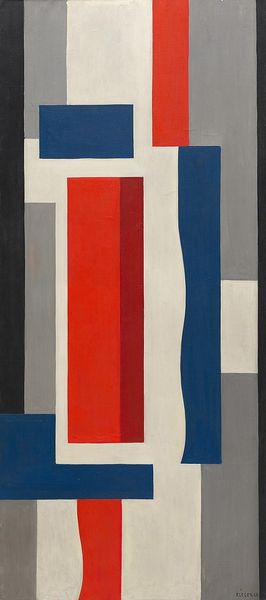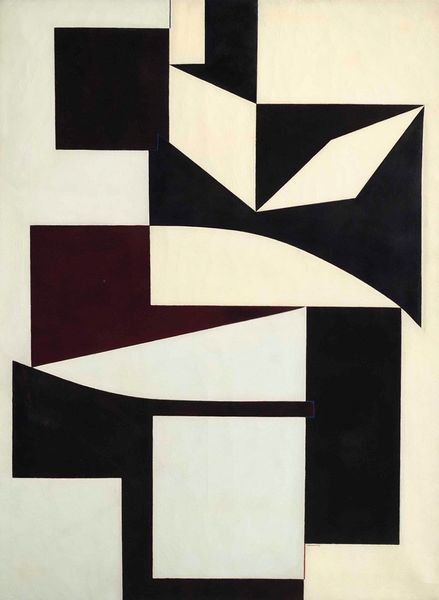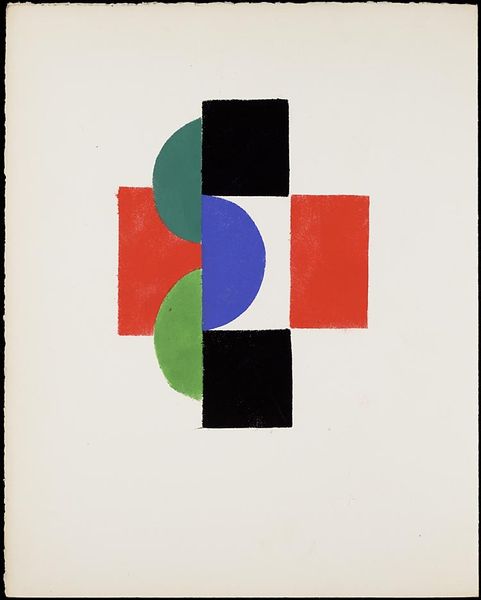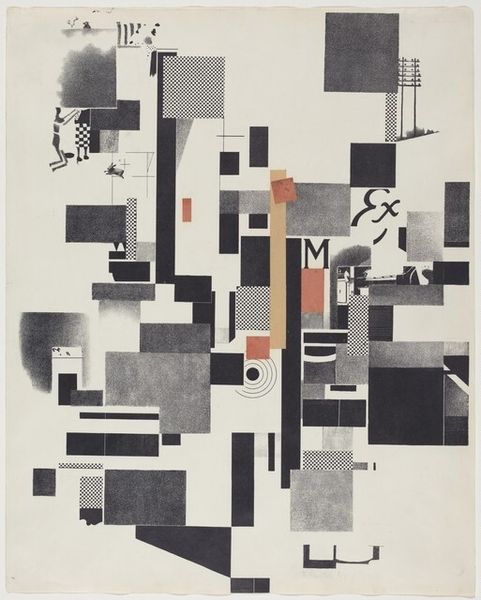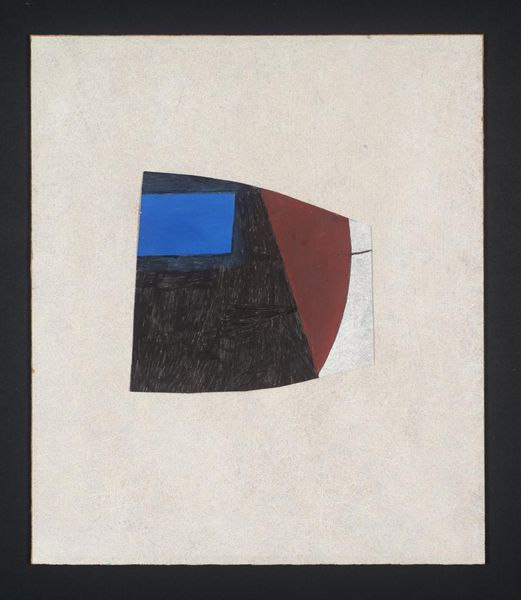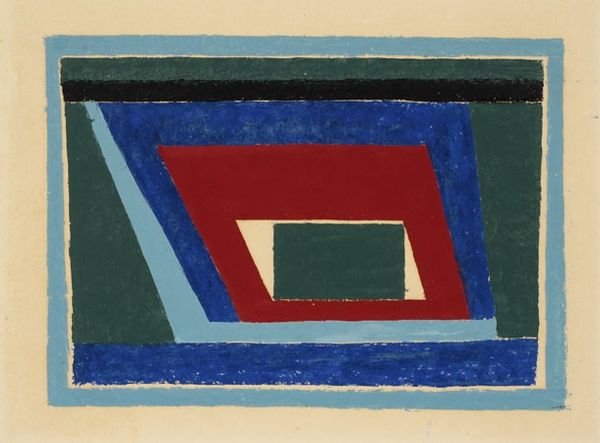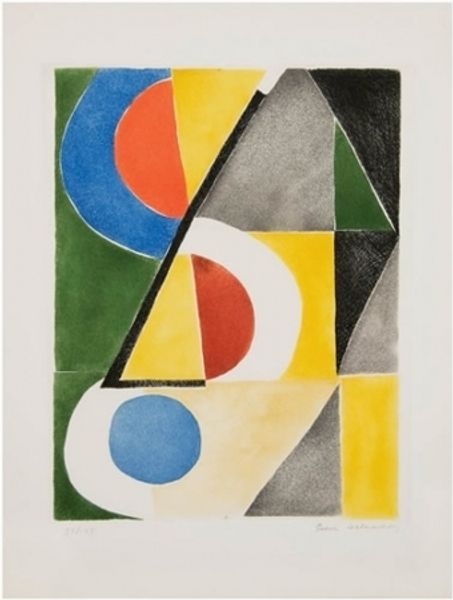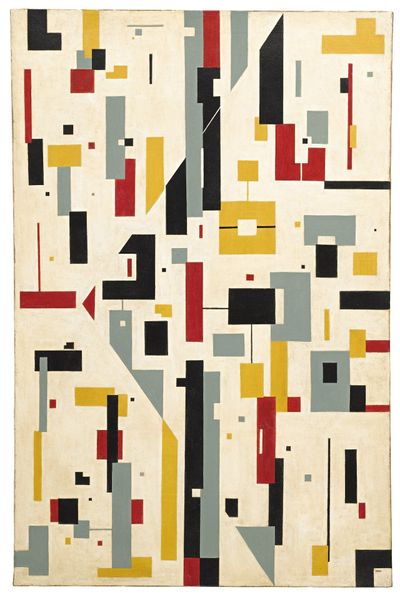
drawing, tempera, acrylic-paint, paper
#
drawing
#
cubism
#
tempera
#
acrylic-paint
#
paper
#
abstract
#
geometric
#
geometric-abstraction
#
abstraction
#
modernism
Copyright: Modern Artists: Artvee
Editor: So, here we have Fernand Léger's "Projet pour une mosaïque," which translates to "Project for a Mosaic," made with drawing, tempera, and acrylic paint on paper. The bold geometric shapes immediately grab my attention. What do you see in this piece, especially considering Léger's historical context? Curator: Léger’s work always prompts me to consider the dialogue between abstraction and the real world. In "Projet pour une mosaïque," those geometric forms, the red, blue, black—they’re almost like abstracted figures or architectural elements, remnants of the industrial age Léger was so fascinated by. Think about it: this was a period of massive social and technological upheaval. Does this piece evoke a sense of the machine age for you? Editor: I can see that. There's a starkness to it, like looking at blueprints. How does this relate to the broader Cubist movement, which it’s linked to? Curator: Well, while it shares Cubism’s fragmentation of form, Léger diverges in his focus on bold, simplified shapes and primary colors. It’s a move towards a more accessible, populist aesthetic, shedding the elitism sometimes associated with early Cubism. He aimed to integrate art into everyday life, to make it relevant to the working class. Do you see this democratic impulse in his style? Editor: Yes, definitely in the bold, uncomplicated forms and colors. It feels less about intellectual puzzle-solving and more about immediate impact. Curator: Exactly! And think about mosaics themselves. They are often public art forms. Léger wasn't just making art for the elite; he was conceiving art for the masses, aiming to reflect and shape a modern, collective identity. This artwork urges me to look beyond the visual, seeing it as a testament of modernism’s social agenda. Editor: I see the image, but more importantly, I hear the statement now. It really makes me consider the artist’s intent. Thanks! Curator: And thank you for helping me consider new angles of intersectionality. It highlights how art is intertwined with the social movements that shape society!
Comments
No comments
Be the first to comment and join the conversation on the ultimate creative platform.
